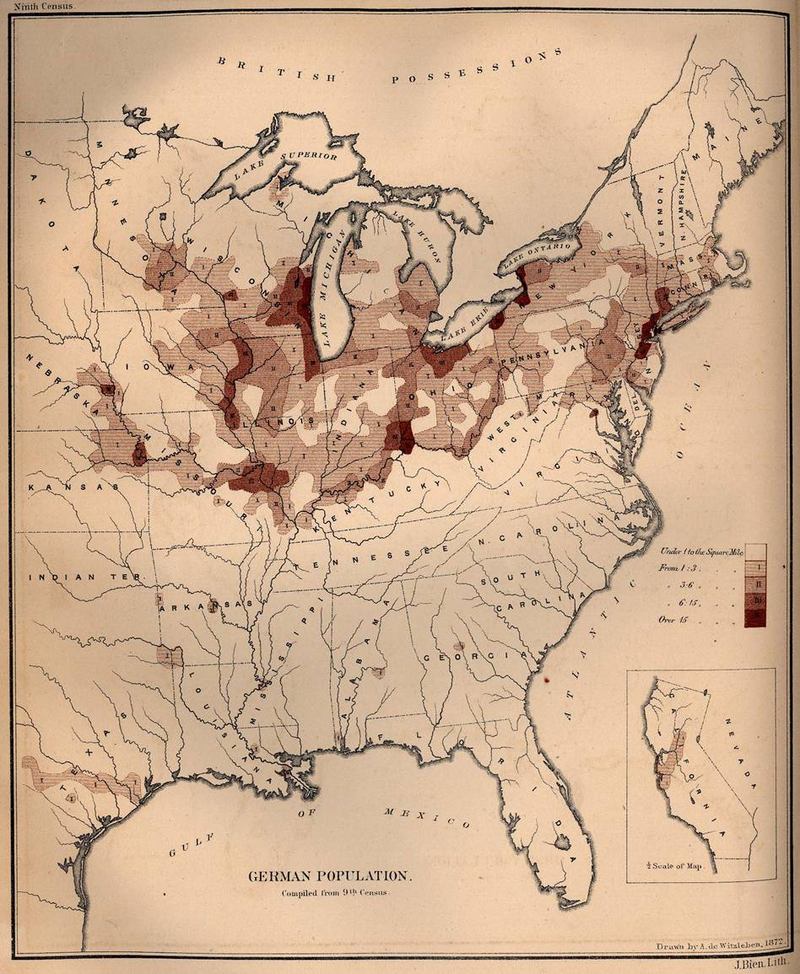 The NYPR Archive Collections
The NYPR Archive Collections
Episode 10 Germans in the United States

From the Office of Education study guide:
THE GERMANS My country, right or wrong; if right to be kept right, if wrong to be set right.— CARL Schurz.
There are more Americans of German birth and German descent in the United States than any other group, with the exception of the British. While a few Germans arrived in 1626, the first real group of settlers did not come until 1683. Led by Franz Daniel Pastorius, they founded Germantown on the outskirts of Philadelphia. For more than a century, German immigrants landed here before moving on into Maryland, Virginia, Tennessee, Kentucky, and the Carolinas. - Shortly after this group had come to Pennsylvania, the Palatinate, or Rhine Valley, was conquered by French troops. Religious persecution followed and refugees came to Pennsylvania at the invitation of William Penn. They also settled in Scoharie County and along the Mohawk Valley in New York. Freedom of the Press. A famous early German was Peter Zenger. In 1733, he founded the New York Weekly Journal so that he could oppose some of the policies of Governor Cosby of New York. In 1735, Governor Cosby imprisoned Zenger and charged him with libel. Defended by Andrew Hamilton, Zenger was acquitted and the first important blow for the freedom of the press had been struck. Frontiersmen and Soldiers. Along our frontiers, the Germans became fearless Indian fighters. As a tribute to their soldierly qualities, Washington chose a squad of Germans for his bodyguard. General von Steuben, who later helped to build West Point, served as drillmaster for the Continental Army. Others who distinguished themselves were Baron de Kalb, Peter Muhlenberg, and General Herkimer.
Farmers.
By the close of the eighteenth century, the Germans had settled in all the colonies, the Catholics being attracted to French Louisiana. For the most part, they were intelligent, hardworking farmers many of whom became leaders of our agricultural communities. In 1789, Dr. Benjamin Rush wrote of them: A German farm may be distinguished from the farms of other citizens of the state by the superior size of their barns; the plain, but compact form of their houses, the height of their enclosures; the extent of their orchards; the fertility of their fields; the luxuriance of their meadows, and a general appearance of plenty and neatness in everything that belongs to them. The Revolution of 1848. After the unsuccessful Revolution of 1848, nearly 900,000 Germans arrived within eight years. Most of these refugees were fairly prosperous. Among them were farmers, scholars, professional men, and students. For the most part, they settled in Wisconsin, Ohio, Missouri, and Texas. Milwaukee, Cincinnati, and St. Louis became great German centers of business and culture. The greatest of the forty-eighters was Carl Schurz. Later, he helped to elect President Lincoln, took part in the War between the States, and became Secretary of the Interior. He is regarded as the father of our Civil Service and the first one to suggest the conservation of our natural resources.
Nineteenth-Century Germans.
During the first half of the nineteenth century, attempts to establish separate German states in Missouri, Wisconsin, and Texas all failed. During the War between the States, one of the most spectacular feats was the capture of the Arsenal in St. Louis by the German turnverein—a gymnastic society. During the seventies and early eighties, the Germans again came in large numbers. They took advantage of the Homestead Act to settle in Illinois, Iowa, Nebraska, and other states of the Middle West. German Gifts. German immigrants have had great influence on the life of the United States. They are among our finest farmers, bankers. scientists, business men, and inventors. They have done much for vocal and instrumental music. In education, they gave us the kindergarten. To them, we owe such traditions and festivals as Christmas, New Year's Eve celebrations, and the Easter bunny. They have added energy and thoroughness to American life.
WNYC archives id: 125532